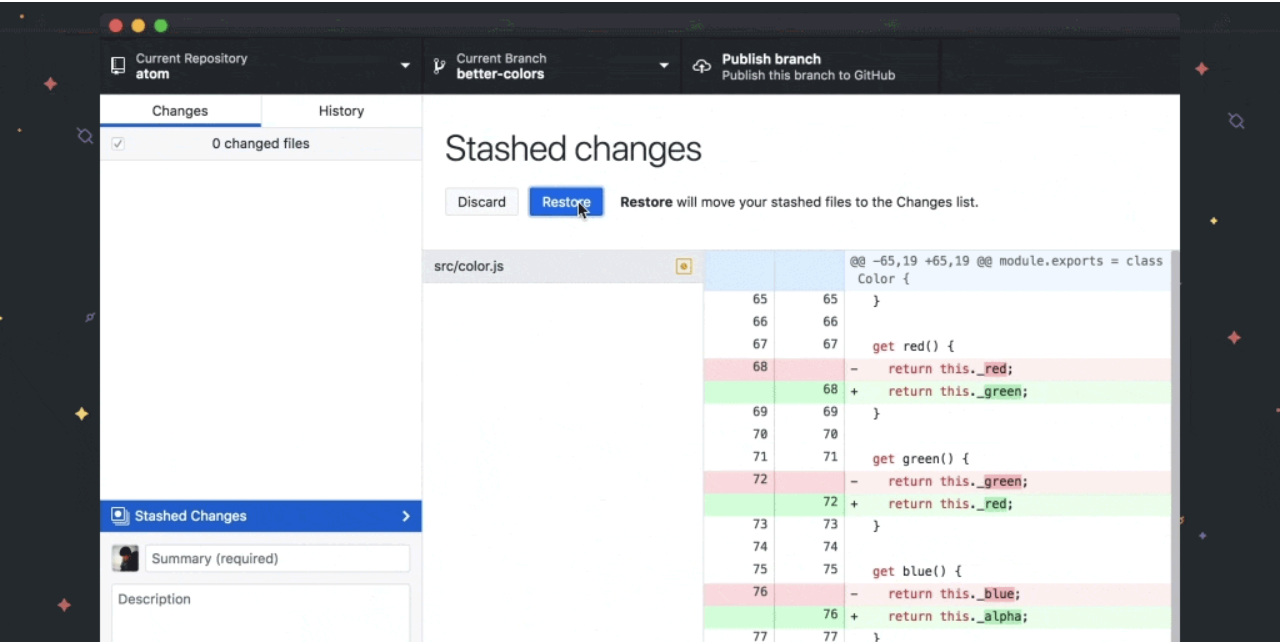
Possible since it now contains all of the necessary git tracking files and subdirectories.
#GITHUB DESKTOP VERSION WINDOWS#
Use the Show Hidden Files check box option under the Windows Explorers View menu to make sure it is visible. git files which form theĬontent of the new ProjectName folder into the FolderWithGitHubDetails folder above andĭelete the newly created ProjectName folder at the bottom of the tree.
#GITHUB DESKTOP VERSION PC#
Which the name of the repository is not the same as the name of the local PC folder. In other words, I wish to be able to create a git repository via GitHub Desktop GUI in ProjectName on the PC and then be able to move it up to GitHub and create a repository there also What I want is all of the contents of the FolderWithGitHubDetails to be a local git repository named Name you wish to use on GitHub? This often happens for me as I tend to set up project directory structures which look like. What about a situation in which the name of the local folder on the PC is not the same as the name of the Repository Scenario 2: The Repository and the Local Folder Do Not Have the Same Name The Publish this Repository to GitHub button located on the top right hand side of the GitHub Desktop to send the If you are satisfied that you have created the local repository in the way you wish, make it the active repository and press
#GITHUB DESKTOP VERSION HOW TO#
In this case just delete the bottom ProjectName directory and its contentsĪnd also delete the local repository in GitHub Desktop (or see below for how to fix it).

If you make a mistake and specify the ProjectName folder as the target when you create the new local repository, you willĮnd up with a structure which looks like … Git tracking files and subdirectories in the existing directory. Since the ProjectName folder already exists, GitHub Desktop will not create it and will create the appropriate … all you need to do is choose the Create New Repository option in GitHub Desktop,Ĭhoose the TopLevelDirectory as a target and give it the name ProjectName as the name of the local repository. | - File2 not for GitHub or version control | - File1 not for GitHub or version control So, if your directory structure looks like … When GitHub Desktop creates or adds a new local repository it always wants the folder name to be the same as the name of the repository.

You just create a new local repository in GitHub Desktop and then push it up to GitHub. This operation is simple if your repository on GitHub is to have the same name as the local folder on the PC. Scenario 1: The Repository and the Local Folder Have the Same Name

It is not likely anything will go wrong in a way that affects your work - but why take chances. Warning, you should always make a backup copy of your files before messing about with GitHub Desktop. It up to GitHub and automatically create a repository for it there. Ultimately, all you really want to do is just place the local folder under some sort of git version control and then move You do have the GitHub Desktop GUI tool though. You don't particularly want to mess with all that sort of thing. Furthermore, you do not have the git command line tools available (such as git bash) and, what is more, Here is the scenario: you have a GitHub account and you also have some work in a folder on your Windows PC you would like to Creating a GitHub Repository from an Existing Project or Folder using GitHub Desktop


 0 kommentar(er)
0 kommentar(er)
